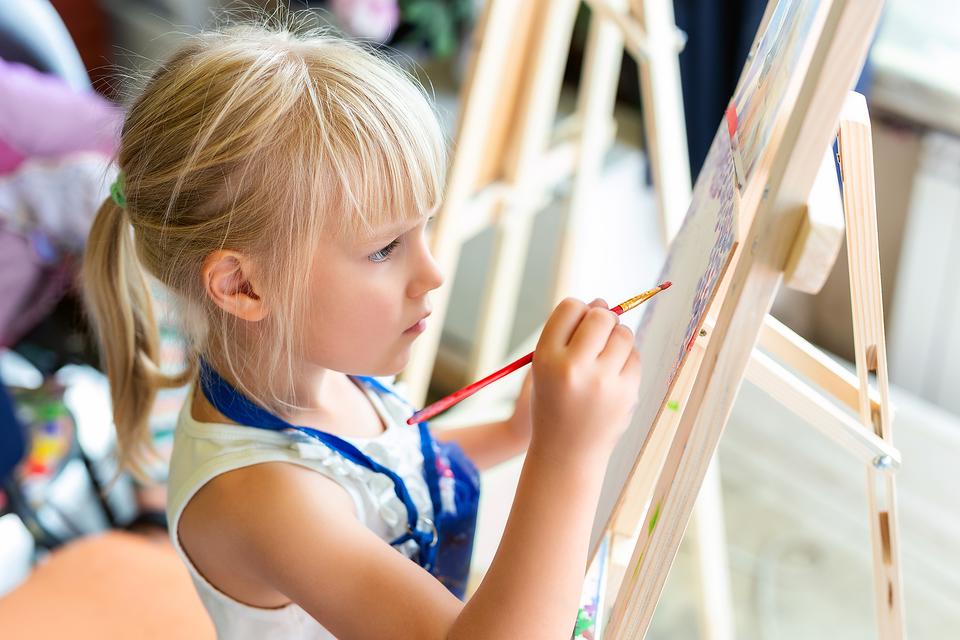
Contents
- 1 The Importance of Creativity in children
- 1.1 Nurturing Creativity Through Play
- 1.2 Encouraging creativity in children Exploration
- 1.3 Fostering a Creative Environment
- 1.4 The Role of Parents and Educators
- 1.5 Harnessing Technology for creativity in children
- 1.6 Celebrating Diversity of Expression
- 1.7 Exploring the Role of Education in Fostering creativity in children
- 1.8 Championing Diversity and Inclusion in creativity in children Spaces
- 1.9 Supporting Lifelong Learning and creativity in children Growth
- 1.10 The Impact of Creativity on Well-being and Mental Health
- 1.11 Exploring the Role of Technology in Fostering Creativity
- 1.12 About The Author
Education of creativity is more imperative than ever because the world is changing faster than ever. In the 21 st century, creativity is an authoritative competency that defines a child’s chances of success. Creative kids are fundamentally better problem-solvers, and they spur the development of originality and resilience . That said, why is creativity in kids essential, and how can people imagine it?
The Importance of Creativity in children

Creativity is commonly defined as the ability to create unique ideas, solutions, and expressions. This is one of the key features of human intelligence that underlies every progress and development. However, when it comes to children, creativity is not about painting or using different colors. It is a specific mindset and vision that kids can help develop and improve indrabet. Fostering creativity promotes self-expression, allows children to discover what they are interested in, and develops their critical-thinking skills, which will be useful throughout life.
Nurturing Creativity Through Play
Play is the natural language of children and a conduit to solidify skill creation. Imaginative play enables children to temporarily escape reality and enter a realm reserved for developmental opportunities of their own and full of endless possibilities. Children will take their building blocks and turn them into skyscraper cities, don capes pretending to be superheroes, and invent new games. Play provides children with an open forum to express themselves and refine their creativity.
Encouraging creativity in children Exploration

As a result, one of the best ways of fostering creativity in children is to permit them to explore and make discoveries. Children are exposed to various aspects of art, music, science, and nature. This enables them to be inquisitive and creative when exploring new stimuli. Consequently, children are encouraged to ask questions and demonstrate connections as it enhances their critical thinking. Such a characteristic develops a sense of wonder and creativity that lasts to their adulthood.
Fostering a Creative Environment
Hence, promoting a conducive space is a prerequisite for encouraging the development of creativity among children. It is determined not only by granting creative individuals access to necessary resources in the form of art materials, books, or smart games but also by introducing a culture of routine trials and errors in this type of behavior. When given freedom of trial, children get to your-hands-on multiple ideas and concepts without having a fear of being wrong. Such an experience nurtures determination and daring since the Alfred State College states creativity .
The Role of Parents and Educators
Parents and teachers are responsible for stimulating the development of creative abilities in their children. Through encouragement, support, and positive reinforcement, both encourage children to be confident to be creative. Moreover, parents and teachers are examples to follow since they allow their children to see their creative realization. Thus, collaboration, support, and nurturing are key factors in the acquisition of creative maturity for children.
Harnessing Technology for creativity in children
Nowadays, technology can be utilized as a great opportunity to develop creative skills in children. There are a large number of interactive learning applications available today. There are also many digital tools that can be used to spark creativity, such as creative articles. Children may experiment with new artistic techniques and mediums using digital tools while working together . It is critical to add screen time with actual-world use as well.
Celebrating Diversity of Expression
Creativity manifests itself in a variety of ways and flavors; as a result, it is critical to appreciate and foster this diversity of expression among children. Regardless of how a child expresses themselves in art, music, singing, reading, or critical thinking, each child has a unique ability and an interest that should be nurtured and encouraged. When one honors the diversity and independence of each child, they establish an environment of receptivity and respect in which all children will flourish creatively.
Exploring the Role of Education in Fostering creativity in children

Education plays a vital role in nurturing creativity in children. However, traditional educational systems often prioritize rote memorization and standardized testing over creative thinking and innovation. To truly unleash children’s creativity, we must reevaluate our approach to education and incorporate more opportunities for hands-on learning, critical thinking, and creative expression. By integrating arts, music, and project-based learning into the curriculum, we can provide children with the tools and experiences they need to develop their creativity and thrive in the 21st century.
Championing Diversity and Inclusion in creativity in children Spaces
In order to foster creativity effectively, it’s essential to create inclusive and diverse environments where children from all backgrounds feel valued and respected. By celebrating cultural diversity, promoting equity, and providing equal access to resources and opportunities, we ensure that every child has the chance to unleash their creative potential. By fostering a culture of inclusivity and belonging, we not only enrich children’s creative experiences but also cultivate empathy, understanding, and appreciation for the richness of human expression.
Supporting Lifelong Learning and creativity in children Growth
Creativity is not a finite resource; it is a lifelong journey of exploration and growth. As children grow and develop, their interests, talents, and creative abilities evolve with them. Therefore, it’s essential to provide ongoing support and encouragement for their creative pursuits throughout their lives. Whether it’s through mentorship, continued education, or participation in creative communities, we must empower children to continue exploring, experimenting, and pushing the boundaries of their creativity into adulthood and beyond.
The Impact of Creativity on Well-being and Mental Health
Creativity has been linked to improved mental health and overall well-being in children. Engaging in creative activities such as art, music, and writing can serve as a form of self-expression and stress relief, helping children cope with the challenges and pressures of growing up. By providing children with outlets for creative expression, we empower them to process their emotions, build resilience, and cultivate a sense of purpose and fulfillment in their lives. By prioritizing creativity in children’s lives, we invest in their long-term mental and emotional health.
Exploring the Role of Technology in Fostering Creativity
Technology has become an integral part of children’s lives, offering both opportunities and challenges when it comes to fostering creativity. While excessive screen time can limit children’s opportunities for hands-on, imaginative play, technology can also be a powerful tool for unleashing their creativity. Interactive apps, coding programs, and digital art tools provide children with new mediums for creative expression and exploration. By harnessing the power of technology in thoughtful and purposeful ways, we can expand children’s creative horizons and prepare them for success in a digital world.
Also read other interesting articles about Keajaiban Kuliner Bali: Ekspedisi Rasa di Pulau Dewata here








